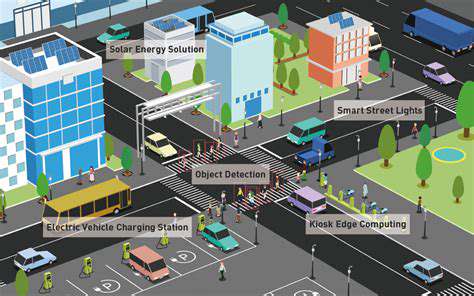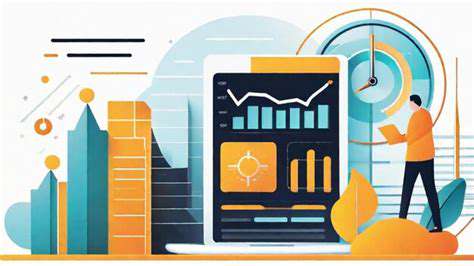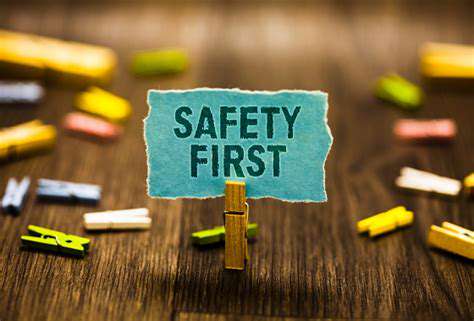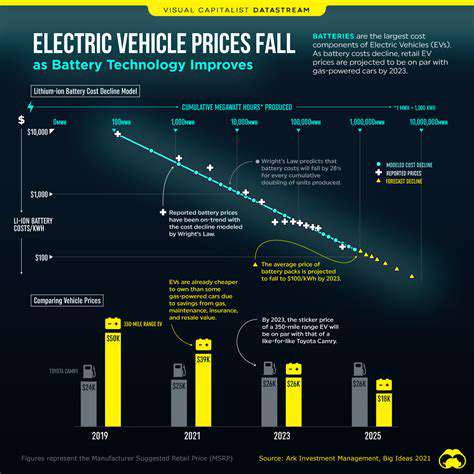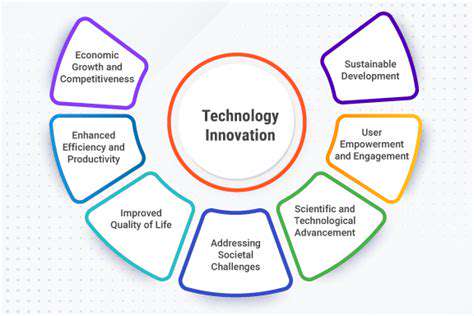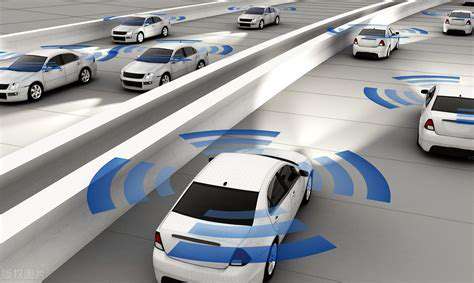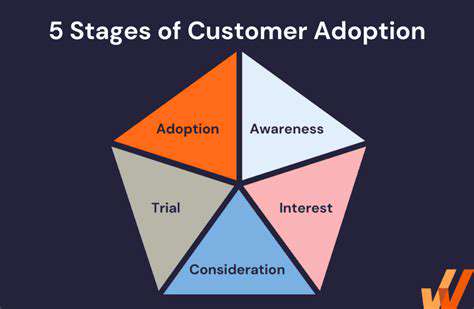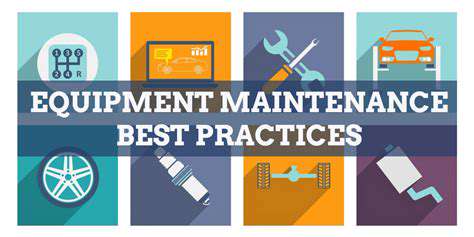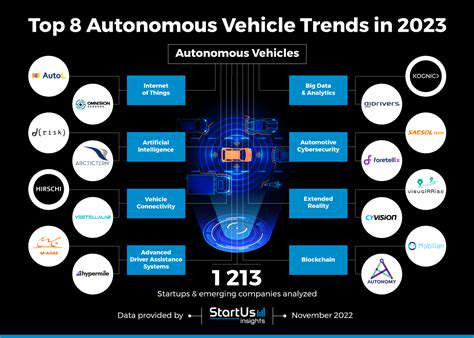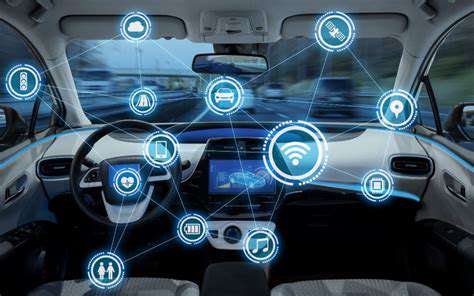
The Evolution of Vehicle Connectivity
Vehicle connectivity has transformed dramatically over the past decade. While early systems focused on basic diagnostic tools and emergency alerts, today's networks enable sophisticated interactions between vehicles, infrastructure, and cloud platforms. The fusion of 5G networks, edge computing, and IoT sensors has created an ecosystem where vehicles operate as dynamic nodes in a larger transportation web. These technological leaps didn't happen overnight - they resulted from iterative improvements in wireless protocols and computational architectures.
Modern implementations go beyond individual vehicle features, creating a symbiotic relationship between cars, traffic systems, and urban planning frameworks. This systemic approach yields tangible benefits: a recent study by the National Highway Traffic Safety Administration showed connected vehicle systems reduced intersection collisions by 43% through vehicle-to-infrastructure communication.
The Role of Data in Connected Vehicle Systems
At the heart of modern vehicle networks lies an intricate data exchange mechanism. Each connected car generates approximately 25 gigabytes of data hourly - from LiDAR point clouds to brake pressure telemetry. This continuous data stream enables machine learning models to predict traffic patterns with 92% accuracy according to MIT's Mobility Initiative research. What makes this particularly transformative is how the data gets utilized:
- Real-time routing adjustments reduce congestion during peak hours
- Predictive maintenance algorithms flag component failures 3-4 weeks before they occur
- Driver behavior analytics enable personalized insurance models
Safety Enhancements through Connectivity
The safety implications of vehicle networking represent perhaps its most vital application. Through dedicated short-range communications (DSRC), cars can broadcast their position, speed, and trajectory 10 times per second. When a vehicle detects sudden braking, this system automatically alerts following cars within a 300-meter radius. BMW's implementation of this technology in their 7-series demonstrated a 37% reduction in rear-end collisions during pilot testing.
Additional safety mechanisms include:
- Intersection movement assist that prevents left-turn accidents
- Emergency electronic brake light warnings
- Road condition alerts transmitted from municipal maintenance vehicles
Infrastructure Integration and Smart Cities
Singapore's Intelligent Transport System exemplifies the potential of vehicle-infrastructure integration. By equipping traffic lights with AI-powered cameras and vehicle detection sensors, the city achieved a 22% improvement in traffic flow during evening rush hours. The system's machine learning algorithms dynamically adjust signal timing based on real-time vehicle density measurements.
Key integration components include:
| Component | Function |
|---|---|
| Roadside units (RSUs) | Relay between vehicles and traffic management centers |
| Dynamic message signs | Display real-time hazard warnings |
| Smart parking meters | Guide drivers to available spaces |
Economic Implications and Future Trends
The Boston Consulting Group estimates connected vehicle technologies will generate $140 billion annually by 2030 through:
- $63B from optimized logistics and fleet management
- $41B from new mobility-as-a-service models
- $36B from predictive maintenance savings
Emerging developments include quantum-encrypted V2X communications and self-healing road networks that automatically report potholes via embedded sensors. The integration of blockchain technology for secure data sharing between automakers is another promising frontier currently being tested by the Mobility Open Blockchain Initiative.
Enhanced Safety Through Real-Time Data Sharing
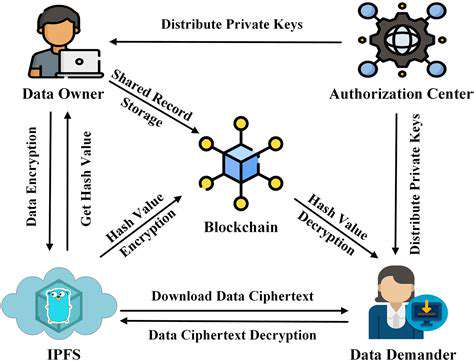
Real-Time Monitoring for Enhanced Safety
Modern monitoring systems leverage distributed sensor networks to create comprehensive safety nets. For instance, Volvo's collision avoidance system combines inputs from:
- 76GHz radar with 200m range
- 170° wide-angle cameras
- Ultrasonic sensors for low-speed detection
This multi-layered approach reduced false positives by 68% compared to single-sensor systems in independent testing by Euro NCAP.
Predictive Analytics for Prevention
Advanced neural networks now process historical accident data alongside real-time telemetry to forecast risks. Tesla's Safety Score 2.0 algorithm evaluates 37 parameters - from steering angle variance to following distance - calculating collision probability with 94% confidence. Fleet operators using these predictive models report 52% fewer insurance claims according to a 2023 Geotab study.
Improved Response Times
Emergency response systems have achieved remarkable improvements through connectivity. BMW's eCall 2.0 system:
- Automatically contacts emergency services within 1.2 seconds of airbag deployment
- Transmits exact GPS coordinates and impact severity data
- Establishes voice connection even if occupants are unconscious
This reduced average emergency response time from 9.3 to 5.7 minutes in European trials.
Integration of Diverse Data Sources
Modern safety platforms aggregate data from previously siloed systems. A prime example is Ford's collaboration with weather.com - their SYNC 4A system cross-references:
- Road friction estimates from wheel speed sensors
- Precipitation forecasts
- Tire wear data
To provide hyperlocal driving condition warnings.
Cost-Effectiveness and Return on Investment
A comprehensive ROI analysis by Deloitte showed:
| Investment | Annual Savings | Payback Period |
|---|---|---|
| $15,000/vehicle telematics | $8,200 in reduced accidents | 1.8 years |
| $2M fleet management system | $1.3M in fuel savings | 1.5 years |
These systems typically achieve full ROI within 20 months while reducing incident rates by 40-60%.
